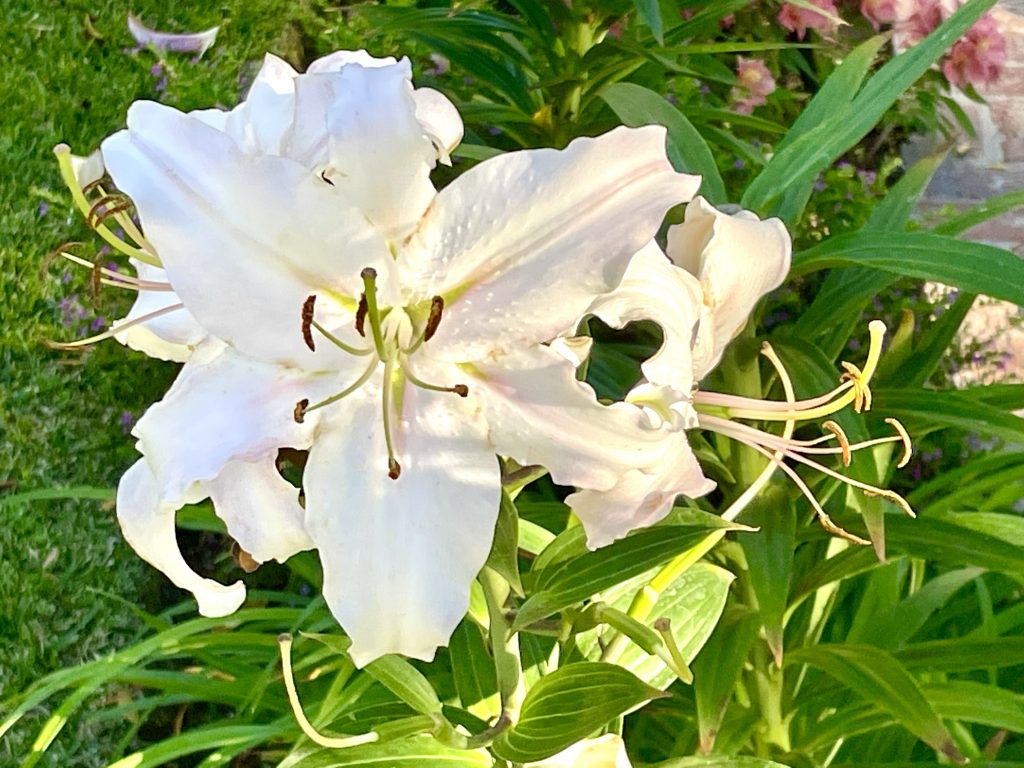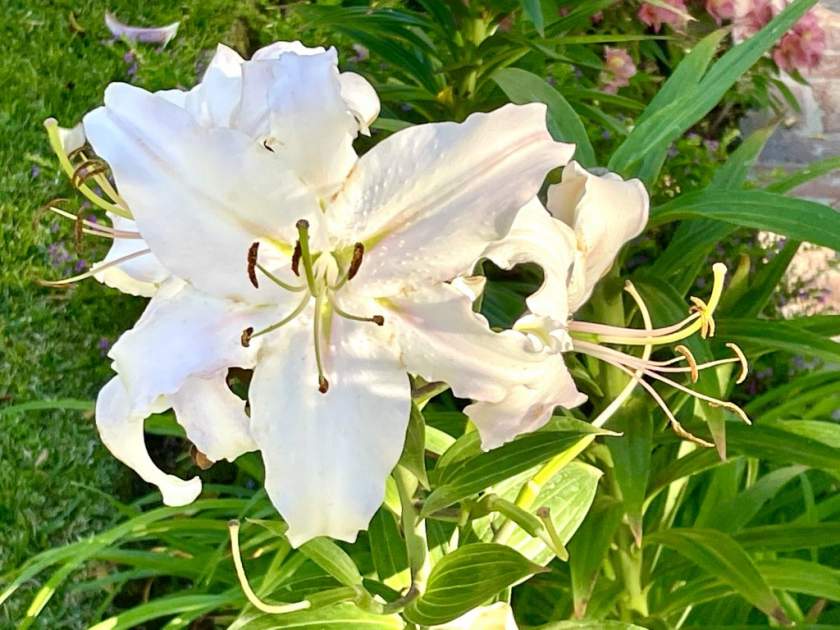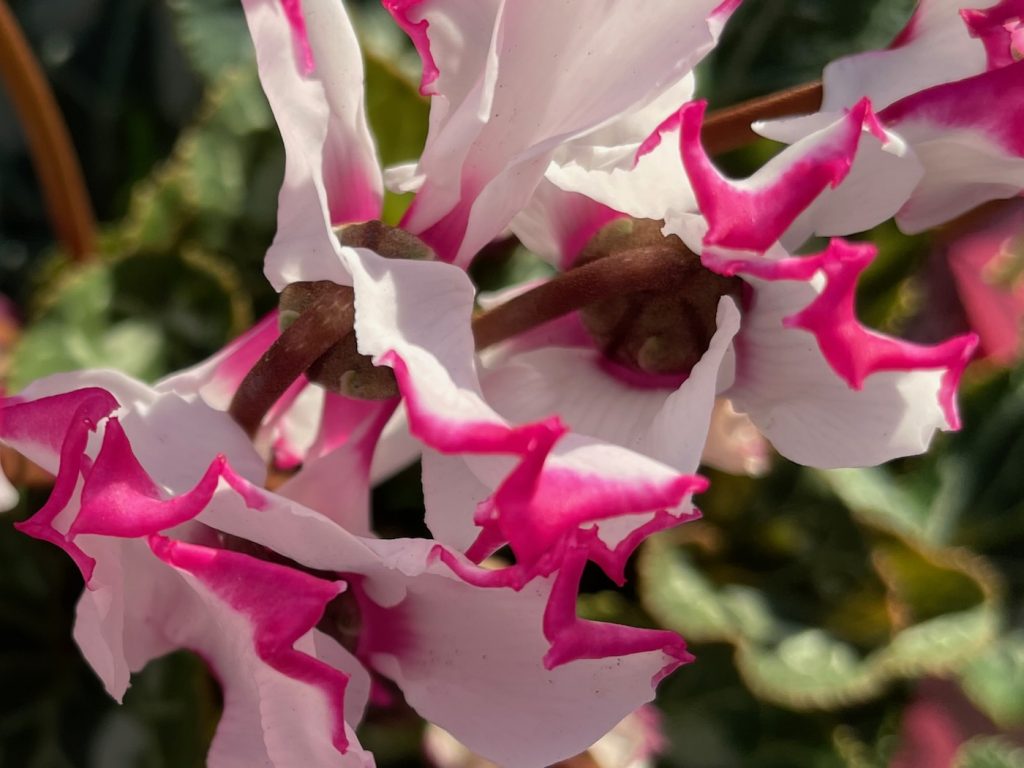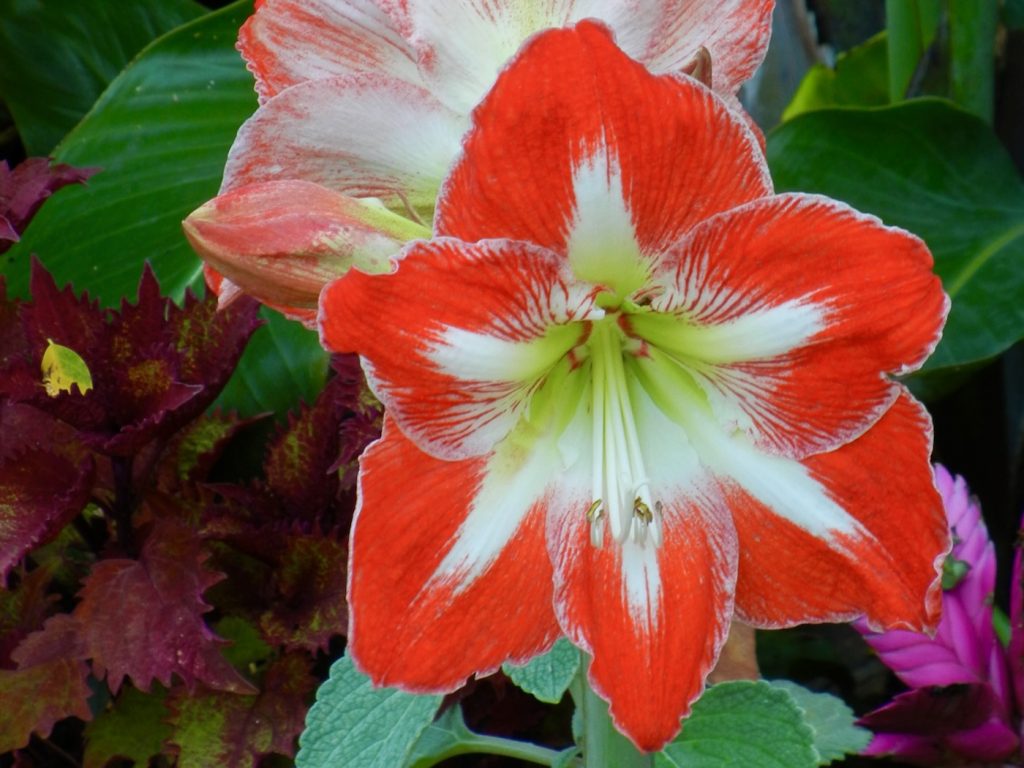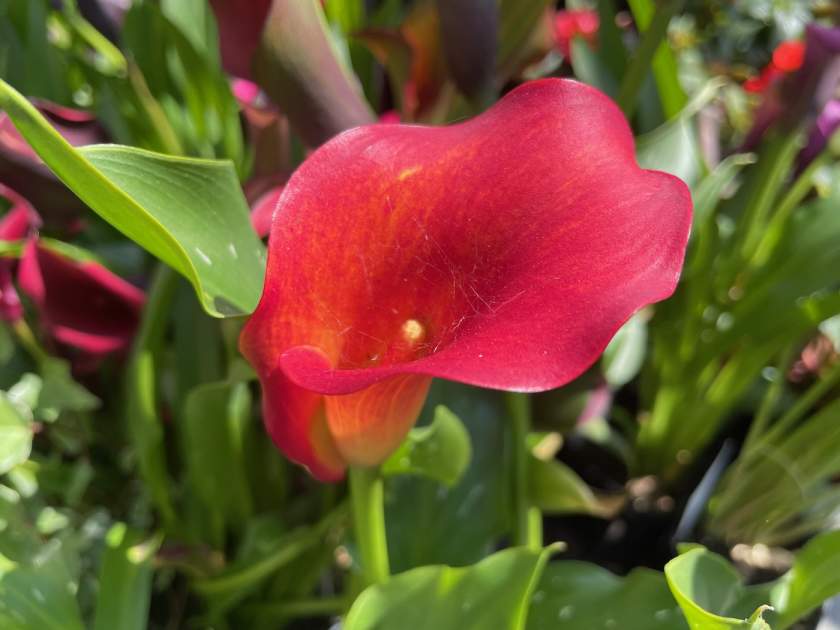Lilium candidum, also known as Madonna Lily, White Lily, French Lily, Annunciation Lily, Ascension Lily, Bourbon Lily, or St Joseph’s Lily, belongs to the Liliaceae family, which is commonly referred to as the lily family. Native to the Balkans and the Middle East, this stunning flower carries a rich cultural history and is cherished for its elegant beauty.
As a bulbous perennial, Lilium candidum is relatively easy to cultivate. It can reach a height of 3 feet or 1 meter, commanding attention with its graceful presence. The flowers of Lilium candidum are pure white and typically make their appearance in July, creating a striking contrast against its deep green foliage. Being hermaphroditic, these flowers possess both male and female reproductive organs, and they rely on insects or bees for pollination. The captivating blooms are not only visually appealing but also emit a delightful fragrance, attracting bees and butterflies to the garden. Additionally, Lilium candidum makes an excellent choice for cut flowers, adding a touch of elegance to floral arrangements.
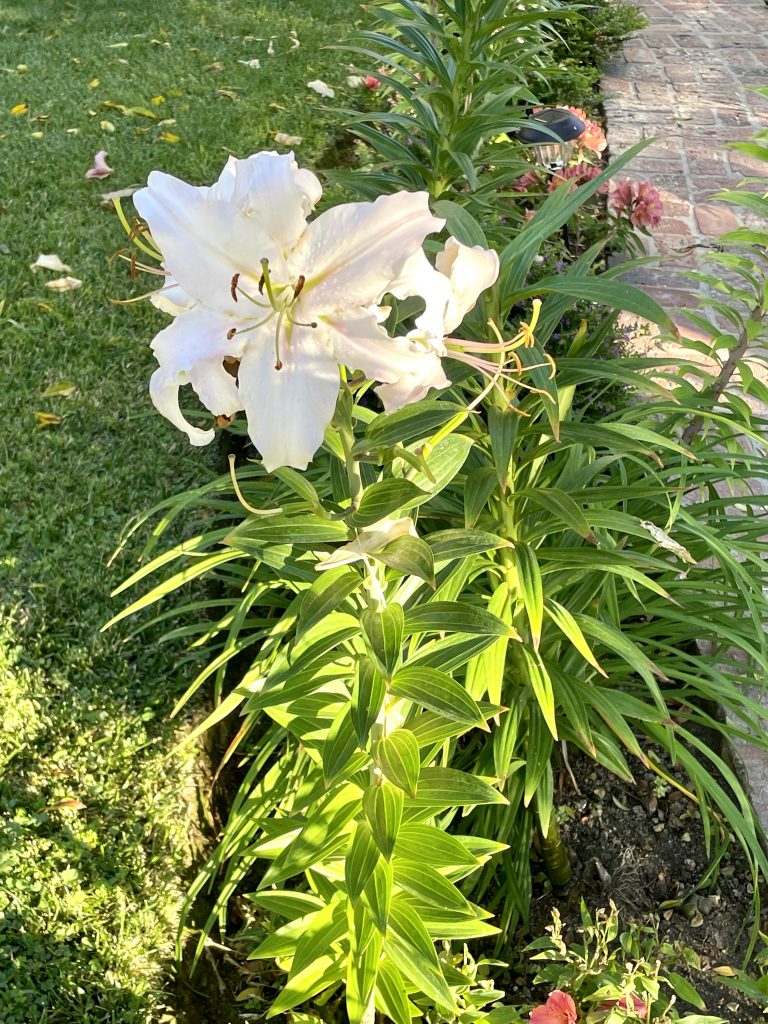
How to grow Lilium candidum or Madonna Lily:
Light and Sun Requirements: Provide Lilium candidum with a location that offers full sun or light shade. While it can tolerate some shade, placing it in a sunnier spot will generally result in more robust growth and abundant blooms.
Soil Conditions: Plant Lilium candidum in rich and moist soil. This lily species adapts well to various soil types, including sandy, loamy, or clay soils. However, it is crucial to ensure that the soil is well-drained to prevent waterlogging, which can lead to bulb rot.
Planting Time: The best time to plant Lilium candidum bulbs is in the early fall. This allows the bulbs to establish themselves before the dormant period and ensures healthy growth and flowering in the following season.
Maintenance: After Madonna Lily has finished flowering, it is essential to cut back the stem. However, it is crucial to wait until the stem turns yellow, as this indicates that the plant has gathered enough energy to nourish the bulb for the next season. This practice promotes the longevity and vigor of the bulbs.
Container Cultivation: Lilium candidum can also be successfully grown in containers. Choose a spacious container that provides ample room for the bulb to develop, and ensure that it has drainage holes to prevent waterlogging. The same guidelines for light, soil, and maintenance apply when growing Lilium candidum in containers.
Traditional and Medicinal Uses:
The bulb of Madonna Lily has been utilized in traditional medicine as an astringent or expectorant. However, it is primarily used externally rather than internally. It is important to note that Lilium candidum is toxic to cats, so caution should be exercised to ensure their safety.
By following these guidelines, you can enjoy the timeless beauty of Lilium candidum in your garden or containers. Its pristine white flowers and delicate fragrance will create an enchanting ambiance and serve as a captivating focal point in any landscape.
